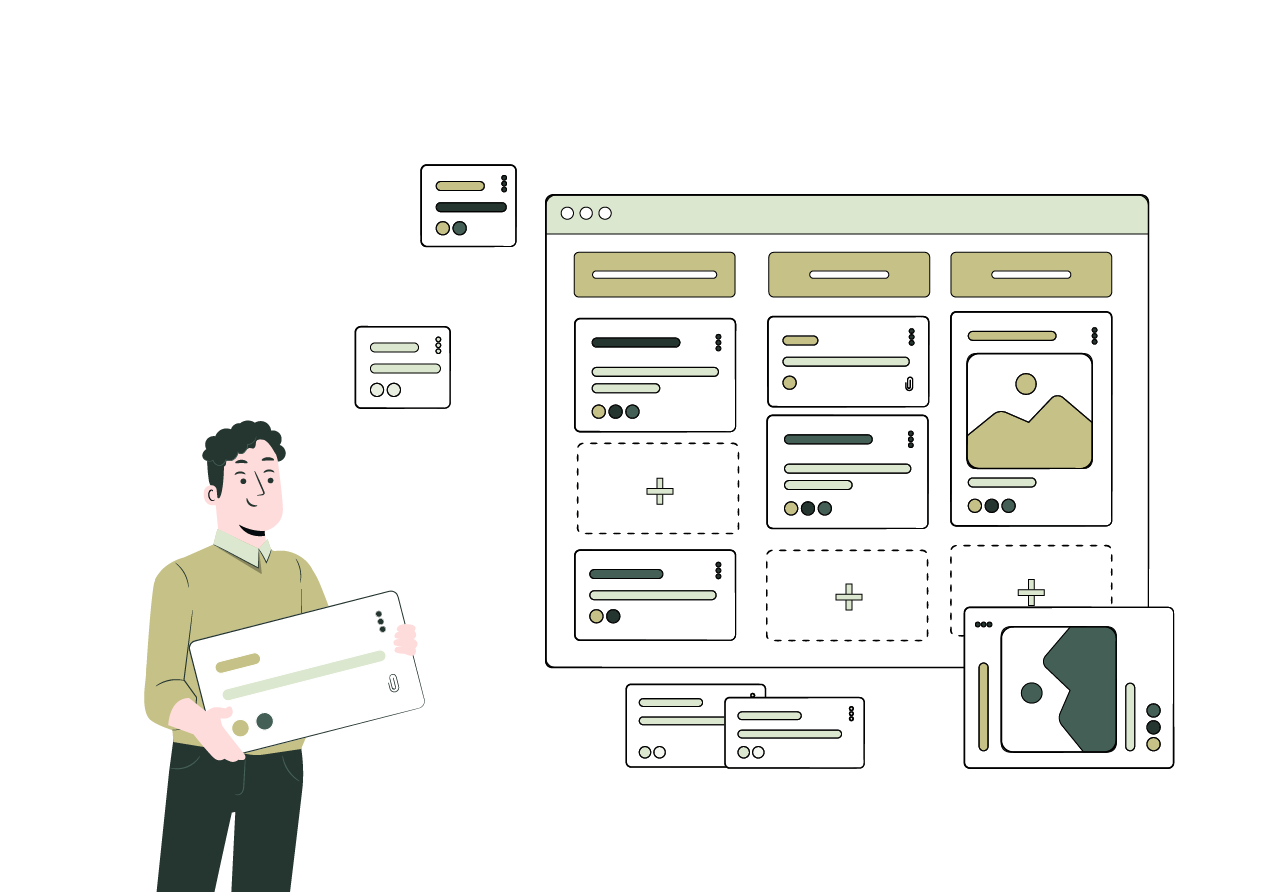Polishing UX in Ruby on Rails with a Zealous Pursuit of Timeless Grace
The avocation of stature and client patriotism is more important than ever as industries converge and competition heats up. The field of UX in Ruby on Rails stands out as a fascinating story with the prospect of thoroughly reshaping user communication and fulfillment. Organizations can make the most of many opportunities through this voyage, including raising brand support and client maintenance as well as diminishing bounce rates, and increasing conversion rates. Everything comes down to using a clever process to divert digital dealings into profoundly significant encounters that enamor clients.
But why stop there? This is tied in with blowing away what is expected of you. Our framework redefines experience as opposed to just enhancing it. What’s our proprietary advantage? Though we truly do love delightful pictures, it’s not just about them.  Grasping your clients’ idiosyncrasies, desires, and preferred secret handshakes requires diving deep inside their heads. Outfitted with this comprehension, we make encounters that vibe customized, much the same as a custom suit for your organization.
Grasping your clients’ idiosyncrasies, desires, and preferred secret handshakes requires diving deep inside their heads. Outfitted with this comprehension, we make encounters that vibe customized, much the same as a custom suit for your organization.
Let’s now confer the outputs. Our strategy works on your main concern as well as intriguing clients. We convert browsers into customers and infrequent visitors into devoted followers by streamlining processes and lowering friction. Thus, if you’re prepared to set out on a story-driven experience to expand insight beyond anything you’ve at any point experienced, come forth with us as we pivot pixels into prose and devise a tantalizing digital existence that fascinates audiences. Welcome to a new chapter of UX in Ruby on Rails design.
Conquering Responsive UX in Ruby on Rails Layouts for a Responsive Stampede
It turns out to be decisively important for organizations to adjust UX in Ruby on Rails for responsive design as they embrace the digital age. By ensuring that web applications adjust progressively to various screen sizes and devices, responsive design expands client experience and commitment on different platforms. Hence, switching Rails layouts over completely to responsive design is a fundamental task for organizations hoping to amplify their web-based visibility. In the current market trends, where customer retention and satisfaction are significant, this strategy is indispensable.
To give clients predictable functionality and aesthetics across all devices, the responsive design includes creating web interfaces that adjust smoothly to different screen sizes and orientations. UX in Ruby on Rails is a strong web application development framework that gives a ton of highlights to assist with achieving this. Using the underlying flexibility and modularity of Rails UI, organizations can effectively apply responsive design concepts. Using media queries, fluid grids, and flexible images in Rails views and templates are instances of responsive design strategies that are utilized for this.
Setting content order and client connections as first concerns is an essential part of making Rails formats responsive. This truly intends that while unnecessary components adjust or focus on themselves in light of screen real estate, fundamental data should be kept available and usable across devices, requiring cautious preparation and design decisions. Moreover, executing UX in Ruby on Rails requires enhancing performance. Effective asset management, caching techniques, and reducing pointless server requests all have a major impact on giving a consistent client experience across multiple platforms.
By integrating responsive design principles into Rails layouts, organizations can further develop client cooperation, lower bounce rates, and ultimately increase conversions. This essential methodology fortifies brand loyalty and competitiveness by encouraging positive user perceptions and featuring a pledge to convey value and convenience.
Rustle Up Aesthetic Gold with these Premier Practices in Ruby on Rails Design
UX in Ruby on Rails design turns into an essential requirement for any web application. Consumers anticipate predictable experiences on different platforms, including PCs, tablets, and cell phones. By utilizing frameworks like Foundation or Bootstrap for responsive design, you can ensure that your application functions admirably on all screen sizes and looks great. Having a consistent UI helps clients explore your application easily. It is vital that all UI components, including buttons, forms, navigation bars, and typography, are reliable. Following design rules and utilizing frontend frameworks’ predefined styles and classes brings about a unified, well-designed interface that improves user experience.
User satisfaction is firmly affected by page load speed. User annoyance and higher bounce rates can result from the slow loading of pages.  Compelling caching techniques, image compression, and minimization of CSS and JavaScript files are instances of performance optimization techniques that are vital. Faster load times because of these improvements lead to a more consistent and engaging Rails UI.
Compelling caching techniques, image compression, and minimization of CSS and JavaScript files are instances of performance optimization techniques that are vital. Faster load times because of these improvements lead to a more consistent and engaging Rails UI.
Your UI will wake up with unobtrusive animations and transitions, making for a captivating encounter. Adding CSS transitions or utilizing libraries like Animate.css increases visual allure and commitment. To keep away from over-the-top animations that could redirect clients from fundamental elements, moderation is fundamental. Keeping up with state-of-the-art knowledge of frontend development trends and strategies will assist you with turning out to be much more capable in Ruby on Rails for UI development, which will at last prompt the making of critical client encounters.
Prospecting for Engaging UX in Ruby on Rails’ Pickaxe of Design
Now that you’ve seen the benefits of UX in Ruby on Rails, let’s take a closer look at how this framework can help you design engaging user interfaces. The seamless integration of the Ruby on Rails CSS framework with JavaScript libraries sets out countless design opportunities. Think about using well-known libraries like Tailwind CSS or Bootstrap to get your styling efforts looking fast so far. Your design process will be streamlined by these libraries’ responsive designs and ready-to-use components.
Your UIs can be improved with the overflow of pre-built components accessible in the UX in Ruby on Rails ecosystem. Investigate unlikely treasures like Paperclip for smooth document uploads, Devise for strong authentication methods, and Simple Form for expedited form creation.  These hidden gems let you focus on creativity by smoothing out complicated tasks and saving you primary development time. You can revise individual UI components with AJAX (Asynchronous JavaScript and XML) without reloading the whole page. Substantial backing for AJAX functionality is presented by UX in Ruby on Rails, which incorporates JavaScript libraries like jQuery easily. You can give a slick and responsive client experience that keeps clients intrigued by using AJAX.
These hidden gems let you focus on creativity by smoothing out complicated tasks and saving you primary development time. You can revise individual UI components with AJAX (Asynchronous JavaScript and XML) without reloading the whole page. Substantial backing for AJAX functionality is presented by UX in Ruby on Rails, which incorporates JavaScript libraries like jQuery easily. You can give a slick and responsive client experience that keeps clients intrigued by using AJAX.
It’s basic to streamline UIs for different screen sizes given the expansion in the utilization of cell phones. Ruby on Rails has responsive design features that let your application work on various devices. The most common way of creating mobile-responsive interfaces is made considerably simpler by using structures like Foundation or Bulma, which ensure a steady client experience across devices. You can plan UIs with UX in Ruby on Rails that enthrall clients as well as further develop their experience overall by utilizing these strategies.
Roundup of Turbolinks and Remote Helpers for a Smooth Sailing UX Journey
The name itself speaks volumes about single-page applications (SPAs) and their novel way of dealing with website design. SPAs, instead of ordinary multi-page sites, forego page transitions by carrying out operations on the client side, giving them a look and feel more likened to native applications. When a page changes, like when you click a link, server-side, server-side strategies will quite often start server requests and finish page reloads. Nevertheless, Turbolinks resolves this problem.
A prominent brand in the Rails community, Turbolinks, effectively handles these issues. Generally, it has capabilities as a JavaScript component that recognizes navigation requests, such as link clicks, and afterward gets and crystallizes the updated content from the page without requiring a full refresh. The polish of Turbolinks isn’t capped to its elements; it additionally dwells in the manner in which it conforms with Rails. Turbolinks are pre-installed and configured when Rails is shipped, which makes the enactment process easier. Because of their vast documentation, Turbolinks can even be skillfully melded into non-Rails projects.
Beyond Turbolinks, Rails gives a plethora of different elements to empower real-time user interactions. UX in Ruby on Rails offers strong support for offers for contemporary web development techniques, from AJAX-empowered form submissions to streamlined controller actions activated by buttons and links. Although Turbolinks functions admirably much of the time, it fails to yield new formats that are triggered by controller actions, which demands a complete page refresh. Rails and Turbolinks are as yet triumphant tools for building dynamic and easy-to-understand websites, despite this restriction.
Pattem Digital’s Spurs-and-All Approach to Rails UX Delight
Our Ruby on Rails outsourcing company is exceptional at providing services and designing UX in Ruby on Rails. We put a high need on getting to know each of our client’s particular necessities to give specialized solutions that help their corporate objectives. Our talented skilled team of designers and developers utilizes industry best practices alongside the most up-to-date innovations to create client experiences that are both aesthetically pleasing and intuitive.
We focus on the standards of responsive design, making layouts as functional as possible on different devices. We hang out in the business for our devotion to quality, meticulous attention to detail, and prompt delivery. Acquiring an upper hand with our innovative, client-centered Rails applications that advance commitment and company expansion is what it means to partner with us.





